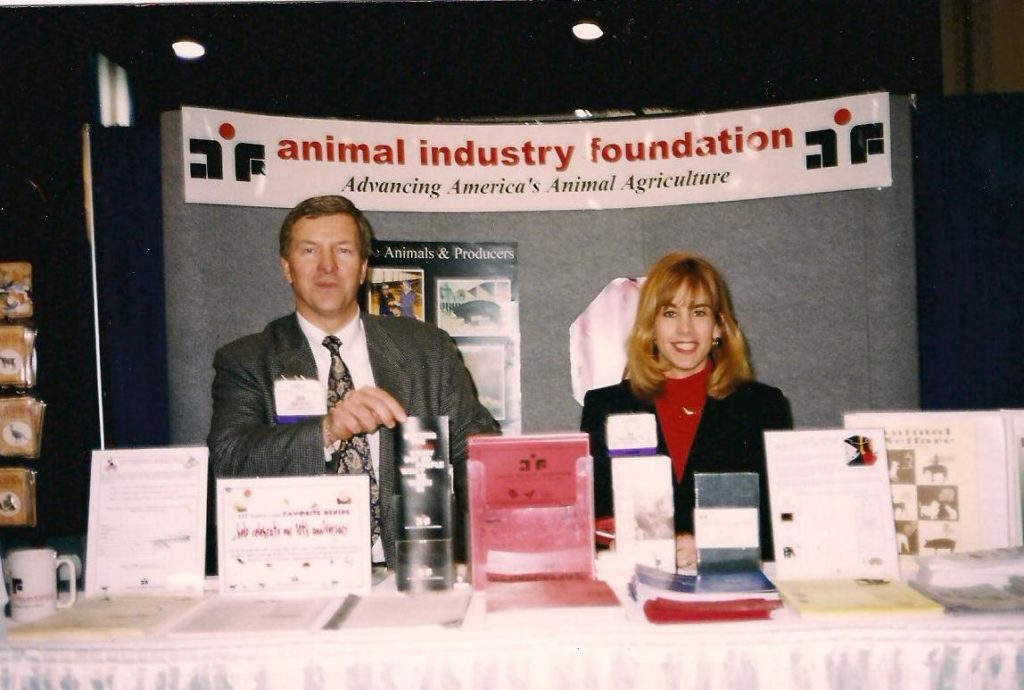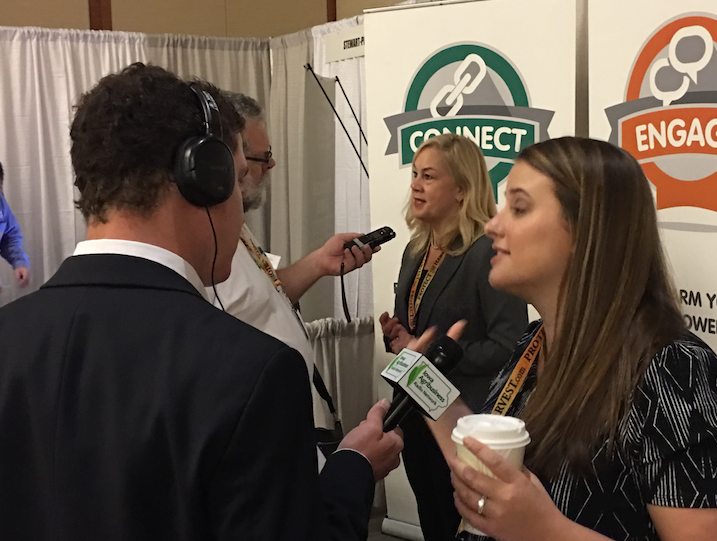Story by Peyton Johnson, junior in public relations and Spanish at James Madison University.
Since its launch in 1987, the Animal Agriculture Alliance has been a central voice in the animal agriculture industry, bridging the communication gap between farm and fork. As the nation’s largest and oldest coalition speaking for the entire animal agriculture industry, the Alliance is celebrating its 30th anniversary in 2017.
In the last three decades, the animal agriculture industry has battled campaigns from anti-animal agriculture groups across the U.S., a misled public, and “undercover” activists. While many of these groups have changed courses over the years, the animal agriculture industry works to better inform the public every day.
History and Milestones

As the animal rights movement in the U.S. began to focus on agriculture in the early 1980s, leaders in animal agriculture met regularly to discuss activist groups, such as People for the Ethical Treatment of Animals (PETA) and the Humane Society of the United States (HSUS). These groups’ campaigns were targeting farming, ranching and the animal protein industry. In 1986, the American Feed Industry Association (AFIA) formed the Animal Industry Foundation (AIF) to have an organization solely dedicated to monitoring the activist groups’ efforts, informing the animal agriculture industry of the activists’ actions and coordinating a unified effort to correct misinformation. The AIF launched in 1987 and later became formally known as the Animal Agriculture Alliance in 2001.
“The board of directors decided the new name reflected the true nature of the organization’s purpose, bringing all stakeholders together to provide a unified voice on behalf of animal agriculture,” explained Kay Johnson Smith, Alliance president and CEO. She added that the name change came after a long-term strategic planning process.
Since its inception, the Alliance has represented a diverse array of entities in the animal agriculture industry, ranging from farmers and ranchers, to companies and associations, to scientists and dietitians. Because there are so many voices within one industry, the formation of the Alliance was crucial to unite stakeholders, creating one strong voice to represent all sectors of the animal agriculture industry.
In order to share information within the animal agriculture industry and to be a resource for the media and the public, the Alliance launched its first website in late 1995 – far ahead of most others in agriculture – establishing the organization as a leader in communication and outreach.

In early 1996, the Alliance produced its first public service announcement that aired on TV and radio stations across America. Then the Alliance sponsored a kids’ cooking TV show that showcased recipes featuring animal protein and provided farm tours. These shows aired in classrooms across the country as well. The Alliance targeted children to provide them with necessary resources to form strong, fact-based opinions about the animal agriculture industry at an early age.
This industry was and still is in great need of a united voice because trends in agriculture narratives are constantly evolving. Today, there is a large need for open conversation between consumers and producers surrounding food sources and the treatment of animals before they become food.
By facilitating engaging dialogue between consumers and producers, the Alliance has helped to shift the animal agriculture industry toward open, transparent conversations with farmers and ranchers understanding the need to engage with consumers. The Alliance emphasizes engaging with all stakeholders, instead of simply providing educational materials. All voices are heard and understand the processes chosen by the other. By focusing on the long-overlooked relationship between consumers and producers, the Alliance has established itself as a thought-leader and an educational resource inside and outside of the animal agriculture industry.
The Alliance continues to demonstrate leadership in the field by utilizing social media and by engaging agriculture and mainstream media. In 2014, the Alliance, along with the pork industry, invited 12 influential food bloggers – only one of whom had ever been on a farm – to tour a swine farm, meat lab and pork production facility. From that tour, there were more than 20 million impressions or views of content produced by the bloggers about their visit.

In 2015, the Alliance conducted a re-branding effort, marking a major organization milestone, according to Hannah Thompson-Weeman, vice president of communications.
“In order to create a look that is appealing to today’s consumer, the Alliance modernized its website and all educational materials to focus on our updated motto: Connect, engage and protect,” said Thompson-Weeman.

Additionally, using its 30 years of resources, the organization writes regularly for some of the industry’s leading publications; is actively engaged on all major social media platforms; writes its own weekly blog which gets tens of thousands of hits – and has provided hundreds of presentations and media interviews nationally and internationally as a recognized expert on farm animal welfare issues.
The Alliance has several committees that work to connect and unify the animal agriculture industry as a whole. Through its Issues Management Committee, the Alliance informs stakeholders on industry-related trends, upcoming issues, current media narratives and strategies to combat misinformation from anti-animal agriculture groups. The Alliance’s Communications Steering Committee monitors current and upcoming media stories and creates resources on how to be proactive with science-based information. The Alliance speaks at many industry-related events and blogs on the topics regularly to share trends and strategies.
“While it was once a challenge to get companies in agriculture to understand the potential impact of the very driven activist groups such as PETA and HSUS, when the agriculture industry leaders began to feel long-term business impacts from these groups, they understood the importance of the Alliance – and they still do today,” said Johnson Smith.
Looking Back to Plan Forward
As the Alliance continues to implement current efforts throughout 2017, it also will launch new projects and initiatives to continue to strengthen the animal agriculture industry. While the Alliance has always had a strong online presence in today’s traditional social media (Facebook and Twitter), the organization will continue to expand its use of newer platforms, such as Instagram and Snapchat.

“The Alliance has grown not only in numbers of members and staff but also in its understanding of strategies used by activists and its own tactics to ensure agriculture’s voice is a key part of the conversations,” said Johnson Smith. She added that, “the Alliance has become more adept at identifying threats, developing proactive responses and coordinating diverse interests to provide a strong, unified voice for agriculture.”
While the Alliance has grown immensely over the past 30 years and made its impacts felt throughout the industry, it also understands that there are always areas for growth.
The anti-animal agriculture groups are not going away, which gives the Alliance a raison d’être. It is important for all stakeholders in the animal agriculture, feed, animal health, biotechnology, meat and food industries to work together because changes caused by activist groups impact stakeholders, up and down the food chain.
“We are all in this together, and the Alliance is here to connect, engage and protect all of animal agriculture,” concluded Johnson Smith.
All posts are the opinion of the author and do not necessarily represent the view of the Animal Ag Alliance.







